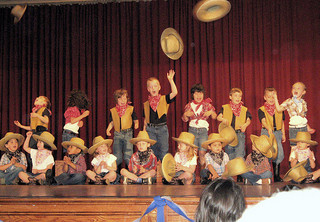
Educators, parents, and politicians concerned with the bottom line have spent untold time debating the merits of year-round grade school. As the Associated Press reports, the U.S. Secretary of Education Arne Duncan falls firmly into the “pro” camp, believing bringing the academic and annual calendars into line will help propel American students to the front of the global classroom. Duncan even announced a new national program adding 300 hours of school per year in select districts: “The three-year pilot project will affect about 20,000 students in 40 schools in Colorado, Connecticut, Massachusetts, New York and Tennessee.” Others plumping for a longer school-year point out that parents would rather arrange for 3 weeks than 3 months of childcare and say that disadvantaged students gain in everything from better nutrition (because they may eat up to two meals at school) to better test scores. The former head of the National Association for Year Round School in San Diego is quoted as saying “The only [kids] who don’t lose [over the summer] are the upper 10 to 15 percent of the student body. Those tend to be gifted, college-bound, they’re natural learners who will learn wherever they are.”
In the “con” camp come parents who enjoy the chance to let their kids daydream, travel, take specific summer courses to bone up in particularly needed areas, and play sports and go to camps. Groups like “Save Our Summers” “point out that states such as Minnesota and Massachusetts steadily shine on standardized achievement tests while preserving their summer break with a post-Labor Day school start,” and that districts are already strapped for cash—how will they pay for extra teachers to fill all those hours?
As it turns out, the calendar conservatives may have at least some research on their side. After outlining the many arguments for and against changing schedules, even profiling San Diego’s 40-year-old blended model (some of its schools are year-round, others aren’t), the AP comes down in the middle: “A 2007 study by Ohio State University sociologist Paul von Hippel found virtually no difference in the academic gains of students who followed a traditional nine-month school calendar and those educated the same number of days spread across the entire year.” So, while the number of classroom hours may make a great deal of difference in educational outcomes, how they’re spread out over the course of a year probably doesn’t.









